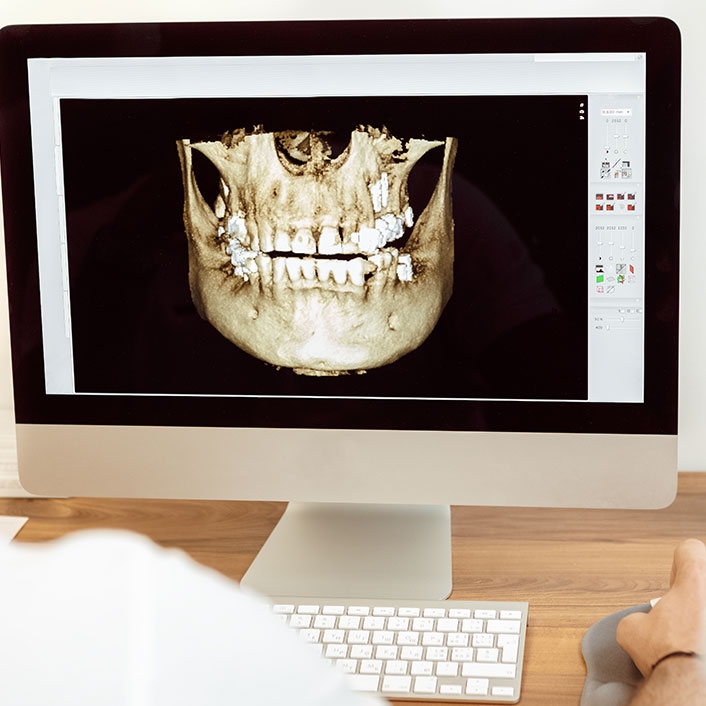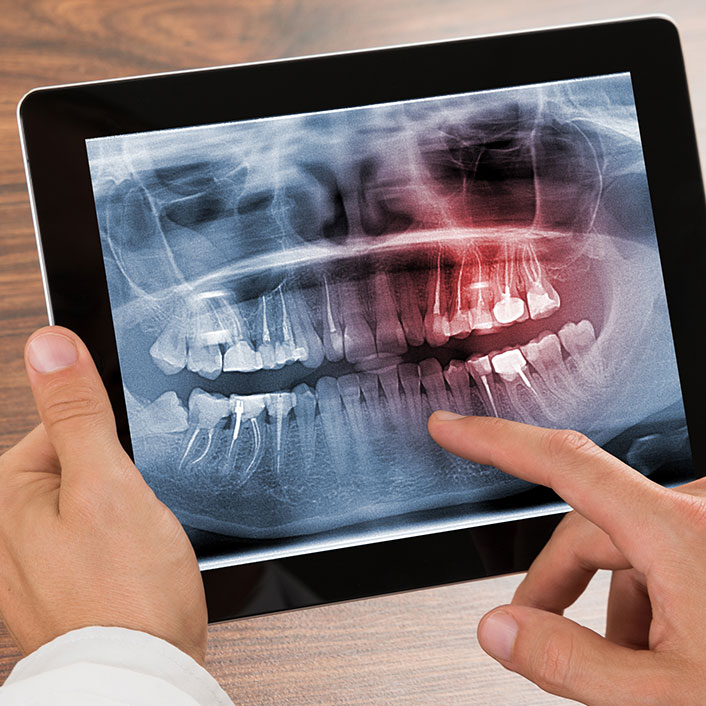Our Technology

You deserve the opportunity to have the most cutting-edge and high-quality care possible.
With Midwest Dental Implants, you can feel comfortable knowing our doctors are knowledgeable and skilled in their field. Beyond that, they are always honest and will always keep your best interests in mind. Our team is professional and positive, creating a fun, enjoyable and exceptional dental experience. Dr. Boainn and Dr. Rivard expect the best out of themselves, and you can expect the very best from them too.
Dental Technologies
Cone Beam
When you come in for a visit, we aim to provide the best, most accurate and most thorough diagnosis possible — and with recent breakthroughs in leading technology, we can.
One of our newest technologies, the CBCT (Cone Beam Computed Tomography), is a cutting-edge alternative to the traditional CT scan and an incredible improvement on the traditional x-ray. This machine takes 3D and digital panoramic images of your mouth, allowing us to monitor growth and diagnose problems, as well as view your entire mouth from every angle — in less than 20 seconds!
Previously, we were limited to a two dimensional view and low resolution x-rays, which made it harder to detect problems. The CBCT has changed that, making your diagnosis more precise and more accurate than ever before.
Digital X-ray
Digital radiography provides a detailed view of your individual tooth.
Digital x-rays use a digital image capture device in place of traditional film which sends an image immediately to a computer. The result is a highly-detailed image of your tooth/teeth. We can enhance the image's contrast and resolution. This image allows us to more easily diagnose dental problems and determine the very best treatment for each case. We can also transmit this image to other dentists and dental specialists, saving you time and money.
This means more safety and better accuracy for you.
X-rays are a focused beam of x-ray particles that pass through bone to produce an image on special film, showing clearly the structure through which it passed. This creates the familiar black and white images doctors and dentists use to diagnose problems and diseases. Without an x-ray of the whole tooth and supporting bone and gum tissues, there would be no way to detect infection or pathology that requires attention.
Digital radiography uses an estimated 40-90 percent less radiation than conventional film x-rays. Digital x-rays use a digital image capture device rather in place of traditional film, sending an image immediately to a computer. The result is a highly detailed image of the mouth, and its contrast and resolution can be enhanced to more easily diagnose dental problems and determine the very best treatment for each case.


